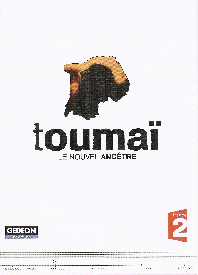- Home
- News
- General News
- Toumaï takes the...
Toumaï takes the ESRF to TV worldwide
28-11-2005
Toumaï is probably one of the most well known “samples” that have been studied at the ESRF. With an age of 7 million years, this cranium belongs to what is thought to be the earliest prehuman ancestor . It has been studied at beamline ID17 with the micro-tomography techniques. Now, a major collaboration between different TV channels around the world has produced a 80 minutes film entitled "Toumai: the New Ancestor ". Around three minutes of the documentary are dedicated to the research done at the ESRF. The première was shown this week in Collège de France, Paris, and a representation of the ESRF staff attended the event.
Share

The thread of the film is Michel Brunet, Professor at the University of Poitiers, head of the Mission Paléoanthropologique Franco-Tchadienne (M.P.F.T.)*. The documentary explains the research that has been done on Toumaï’s cranium and other fossils of Sahelanthropus tchadensis and presents, using modern African ecosystems of Okavango delta (Botswana) and virtual 3D reconstitutions, what could have been the natural habitat of this hominid.
The preparation of such a major production required three years of filming in many different locations such as the Chad desert, the United States, Ethiopia, Botswana, Switzerland and France, among others. The filming crew (producer Gedeon Programmes) came to the ESRF in January 2005 and kept mostly ID17 staff busy “acting” for the documentary over a two-day period. Some of the ESRF researchers that appear in the film are Paul Tafforeau, Alberto Bravin and Christian Nemoz, although many more people were involved in the filming.
The film will be broadcasted on France 2 in February, but also on channels worldwide, such as Discovery Channel, RTBF (Belgium), National Geographic Channel or TSR (Switzerland).
* M.P.F.T. is an international scientific research collaboration between University of Poitiers, University of N’Djamena and CNAR (N’Djamena, Chad) including now more than fifty researchers from ten countries.



